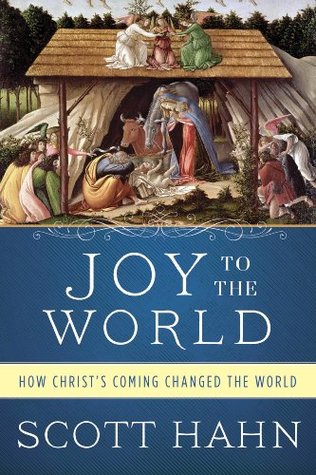More on this book
Community
Kindle Notes & Highlights
by
Scott Hahn
Read between
December 22, 2024 - January 12, 2025
Christmas is, for me, the joy and the love that passed between a young woman and the child who had been placed in her arms. That child was Jesus, and in time he made way for another child who needed love—and that child was you—and that child was me.
Jesus did not come into this world alone. He came into this world by way of a family, and he brought us salvation so that we could share membership in the family of God. That’s the very meaning of salvation and the meaning of Christmas: “But to all who received him, who believed in his name, he gave power to become children of God” (John 1:12)—God’s sons and daughters, members of his family.
The Christmas story has an unconventional hero—not a warrior, not a worldly conqueror, not an individual at all, but rather a family.
The family is the key to Christmas. The family is the key to Christianity.
Matthew, the early records tell us, wrote originally in Hebrew for a Jewish-Christian audience. Luke wrote for Greek-speaking Gentiles and Jews.
Most Christians, sad to say, know little about the earliest accounts of Christmas (apart from those in the Bible).
It is not just a cave, but “this cave,” a certain cave. For Origen, as for the evangelists before him and for Justin, there is a verifiable particularity about the facts of Jesus’s conception, birth, and infancy. These events happened not “once upon a time,” but “in the days of Herod, king of Judea,” when “a decree went out from Caesar Augustus” (Luke 1:5; 2:1).
Pope Benedict XVI considers the infancy narratives and asks the inevitable question: “Are we dealing with history that actually took place, or is it merely a theological meditation, presented under the guise of stories?”
The message in both is clear: with the arrival of Jesus, God brings about a new beginning, a new creation, a new Torah, and a New Testament.
God makes many promises in the Old Testament, but only twice does he solemnly pledge an oath to bless all nations, once with Abraham and once with David. Significantly, both events took place at the same site, called “Moriah” in the time of Abraham and “Jerusalem” a thousand years later in the time of David (Genesis 22:1–2; 2 Chronicles 3:1).
While Matthew wants to establish Jesus’s credentials as the Messiah of Israel, Luke wants the Gentiles to see him also as Savior of the world.
Many saints and scholars hold that Luke is tracing Jesus’s genealogy through his mother, Mary, while Matthew traces it through his adoptive father, Joseph.
Matthew’s genealogy emphasizes Jesus’s kingly heritage, while Luke’s focuses on his priestly ancestors.
He is King and Messiah. He is High Priest and Redeemer of Israel. He is the agent of a new creation. He is all this because he is, first of all, the Son.
Life expectancy was around thirty for men and less for women. Girls usually entered arranged marriages shortly after puberty and menarche. The men they married were usually at least a few years older, having proven themselves capable of supporting a family.
Salvation is more than knowledge and more than forgiveness, as great as those gifts are. To be saved is to live like God and to love like God.
The Son of God became the Son of Man so that we, children of men, might learn how to become children of God. Jesus said: “Unless you turn and become like children, you will never enter the kingdom of heaven” (Matthew 18:3).
Saint Paul found the answer in Bethlehem: “God sent forth his Son, born of woman …, to redeem those who were under the law, so that we might receive adoption as sons” (Galatians 4:4–5).
Joy is the best argument for Catholicism. People find it irresistible and irrefutable.
the grace of conversion is not something that’s ever “over and done”; rather it is ongoing, and ever-deepening, and lifelong.


